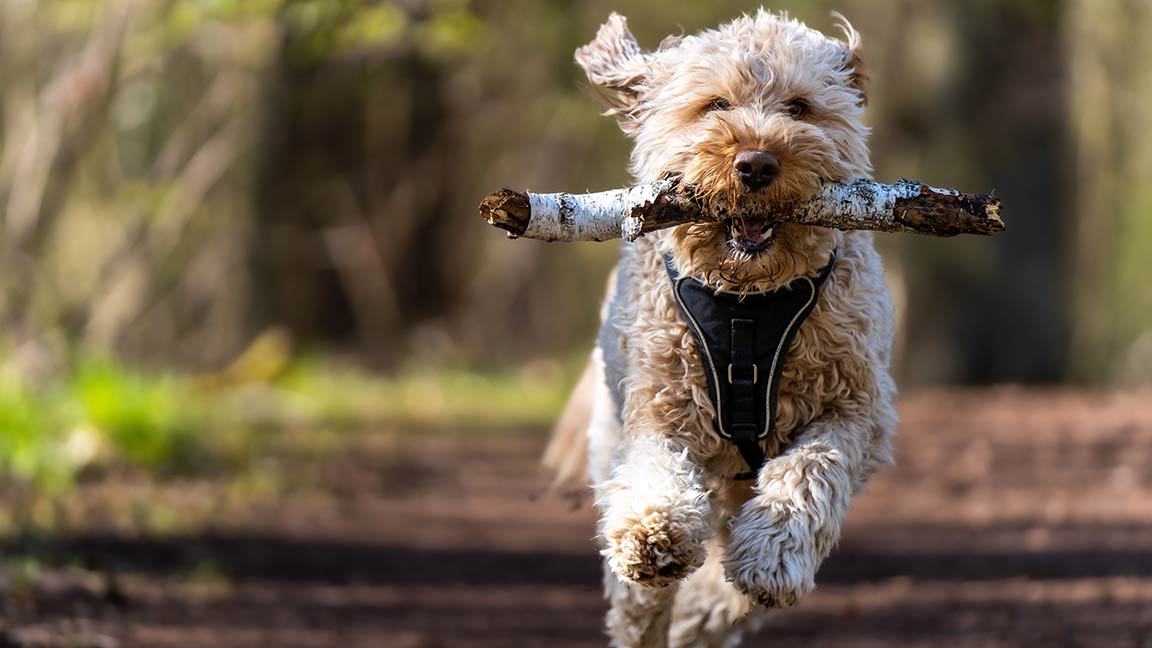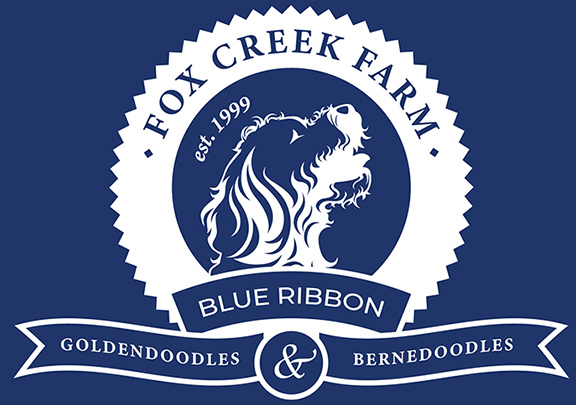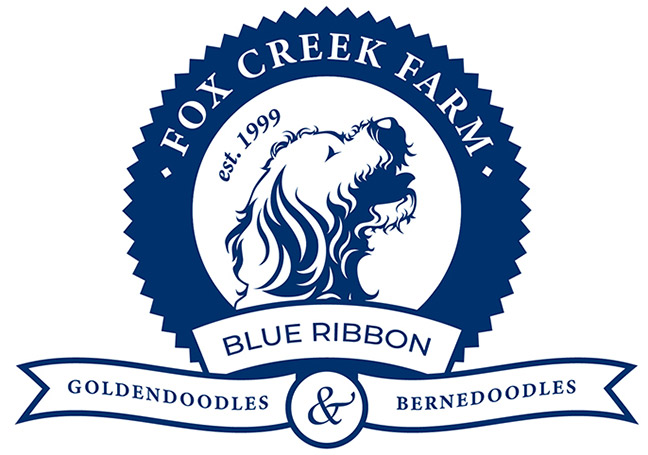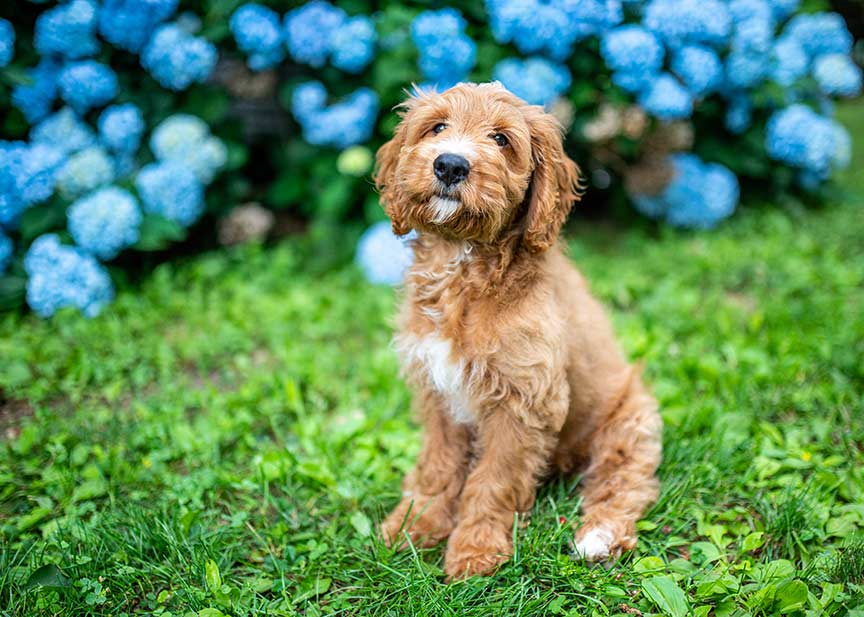
Best Ways to Train Your Puppy at Home.
Adding a furry friend to your family is exciting, but you likely already know it isn’t easy. Puppy training is key to making your fuzzy friend grow into an obedient adult dog. While it may seem like a lot at first, there are many good ways to train your puppy at home, and we’re here at Fox Creek Farm Goldendoodles and Bernedoodles to make it easier for you.
Training your puppy at home is a great way to connect with your pet and create good habits from the beginning. This guide will help you begin this journey with a variety of tips and tricks that will help you overcome the struggles many new puppy owners face.
Family Matters: Involve everyone in training your puppy, as it is a team effort. It’s key to involve all members of your household in the process. This way, your puppy learns to respond to each person.
First Steps to Training Your Puppy at Home
To Start: It’s crucial to start training right away to avoid bad habits from forming. Consistency and positive reinforcement are the main keys to training a puppy. Here are some basics to use as a guide.
- Give your puppy plenty of praise and treats for good behavior, i.e., responding to a command.
- Crate training is an effective way to house-train your puppy.
- Using a bell to signal when it’s time to go out is an effective communication tool.
Teaching Your Puppy
Teaching Basic Commands and Leash Walking: Teaching your puppy basic commands is essential for good behavior and safety. Positive reinforcement is one of the most important and effective ways to train your puppy. Use plenty of praise and treats to encourage your puppy to sit, stay, and come when called as well as reinforcement for properly walking on a leash. Rewards need to be given immediately after the command is followed as puppies have a very short attention span.
Housebreaking
Potty Training: Housebreaking your puppy is one of the most critical parts of puppy training. Take your puppy to the same location outside each time and use positive reinforcement to encourage good behavior. Don’t distract your puppy when outside as it is a business trip. Your goal is for the puppy to learn that going into a certain area means it is time to eliminate, not play. Be sure to help your puppy avoid indoor accidents by taking them outside every 45-60 minutes if they are not confined to a crate.
Crate Training
Crate Training: Utilizing a crate is a great way to housebreak your puppy. It’s one of the most effective ways to house train your puppy. A crate creates a secure space for your puppy to call its den. Puppies do not like to soil their den, so spending time in a crate helps them to gain bladder and bowel control. It is also important for a puppy to learn to spend time alone so as to find ways to entertain itself. Make sure the crate has appropriate chew toys for the puppy.
A puppy’s crate limit during daytime hours is their age in months plus one. Leaving a puppy confined to a crate longer than its physical limit will force it to have accidents in the crate which should be avoided. Gradually increase the amount of time your puppy spends in the crate every month, but be sure to provide plenty of exercise and attention during non-crating times. If searching for Goldendoodle puppies for sale, finding a reputable breeder that introduces puppies to a crate prior to 8 weeks of age is very beneficial.
Positive Reinforcement
Positive Reinforcement: One of the best ways to train your puppy is through positive reinforcement meaning rewarding good behavior with lots of praise and treats. Positive reinforcement teaches your puppy that following a command has a pleasurable outcome making your puppy more likely to repeat the behavior in the future.
Work on a single command for no more than 5-10 intervals. You can repeat the session several times a day. When the puppy remembers and gives the appropriate response the following day, it has retained the knowledge and is ready to move on to another new command.
Things to Avoid
Avoiding Harmful Techniques: Shock collars are sometimes used to train puppies, but they can be harmful and counterproductive. Shock collars use electric shocks to punish bad behavior which can cause fear and anxiety in your puppy and damage your relationship. Instead, use positive reinforcement to encourage good behavior. Always avoid promoting problem behavior by giving any type of attention other than a stern NO!
Clicker Training: Using clicker training is a useful tool for positive reinforcement training. A clicker is a small device that makes a clicking sound when pressed. The sound signals to your puppy that they have performed the correct behavior and a treat or praise follows. It is critical that a “click” is given immediately following the good behavior as well as the earned reward.
Training Goldendoodles Not to Jump: Goldendoodles are friendly and energetic dogs, but they can also be prone to jumping up on people. To train your Goldendoodle not to jump, use positive reinforcement to reward good behavior. Set your puppy up for success by encouraging your Goldendoodle to sit and stay when greeting people by always providing lots of praise and treats for keeping their feet on the ground.
Training Mini Goldendoodles
Training Mini Goldendoodles: Mini Goldendoodles are a smaller version of the breed, but they still have lots of energy and need regular exercise and training. Because they are smaller, many people don’t equate jumping on others to be a problem. However, mannerly dogs are appreciated by all visitors young and old.
Bell Training
Bell Training: Teaching a puppy to ring a bell can be a useful way for your puppy to signal when they need to go outside. Hang a bell near the door low enough for the puppy to reach. Ring it every time you take your puppy outside to go potty. Open the door within three seconds of ringing the bell so the puppy associates the bell sound with making the door open. Eventually, your puppy will learn to ring the bell itself when they need to go outside. They may abuse this newly learned act to go outside and play, but you need to play along so as to not untrain what the bell ringing means.
Recommended Resources
Recommended Resources: There are many resources available to help you train your puppy including books and online dog training, dog trainers on YouTube and online dog training courses. On our website, we have a few great online dog training programs to recommend.
Community Support
Community Support and Interaction: By offering forums, chat rooms, and social media communities where you may engage with other dog owners, many online dog training platforms foster a sense of community. You can exchange experiences, get advice, and pick up knowledge from people who are going through comparable training adventures thanks to these relationships. Your motivation and dedication to training your puppy can be greatly boosted by the support and encouragement from these groups.
It can be an extremely rewarding experience for you and your furry friend when you are their trainer. Using positive reinforcement to teach fundamental commands, crate training, and bell ringing will help to establish a solid behavioral and developmental foundation for your puppy. Bear in mind that teaching your puppy takes time, dedication, and consistency.
You can teach your puppy new skills and behaviors that will benefit them throughout their life if you put in the effort during their puppyhood. The time spent training your puppy can be a rewarding experience when you witness their good behavior all the way through to their senior years.







